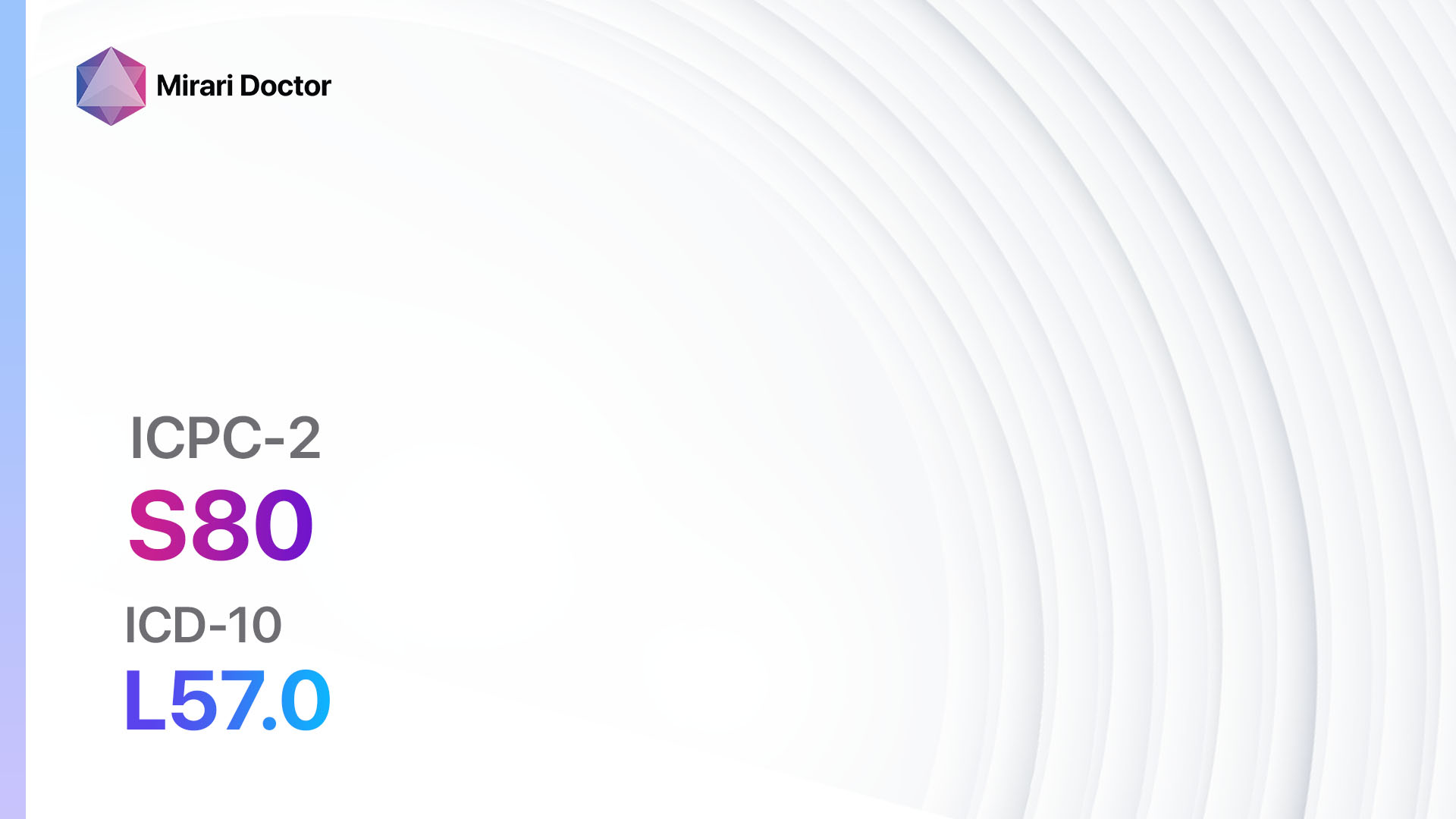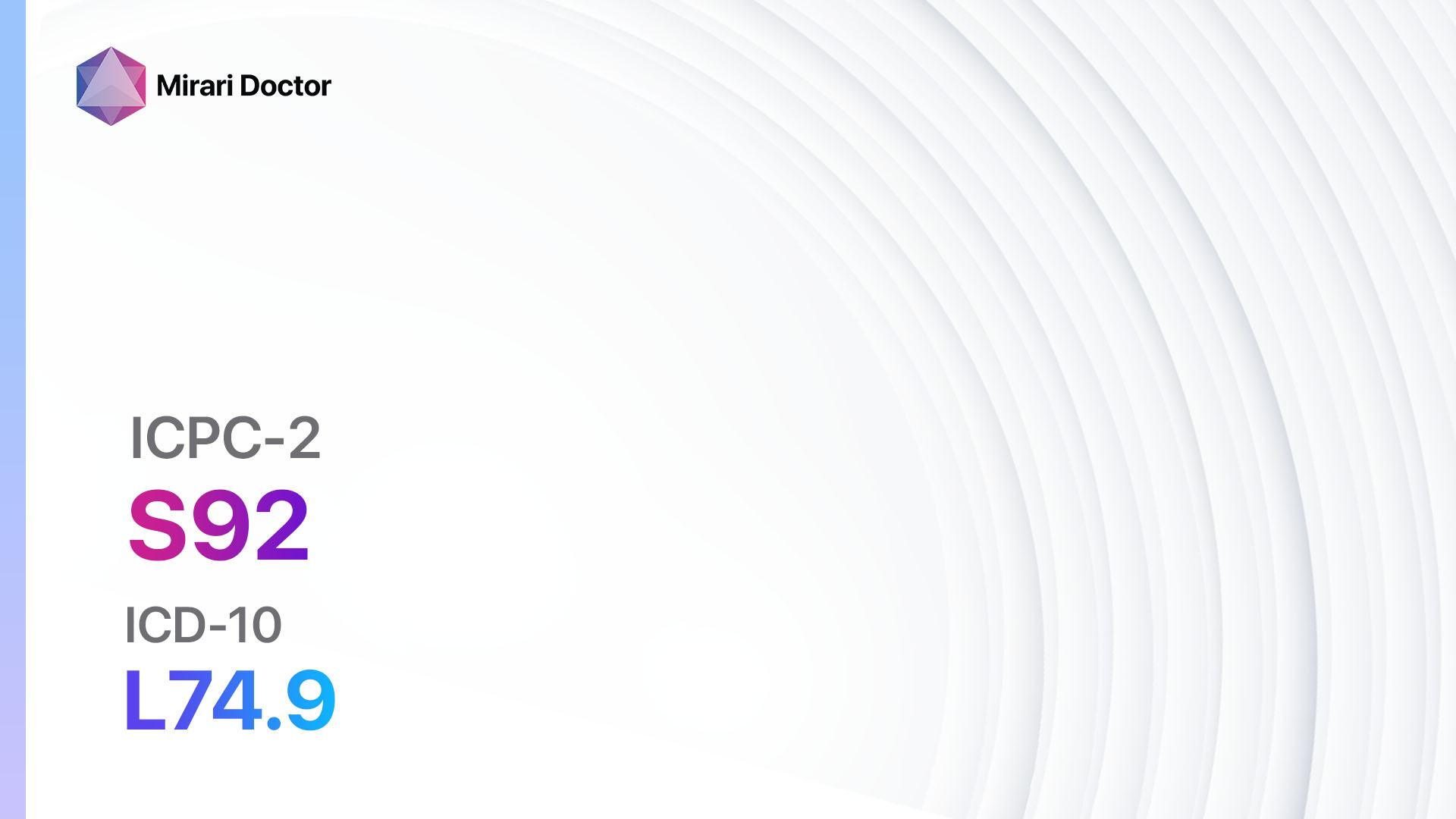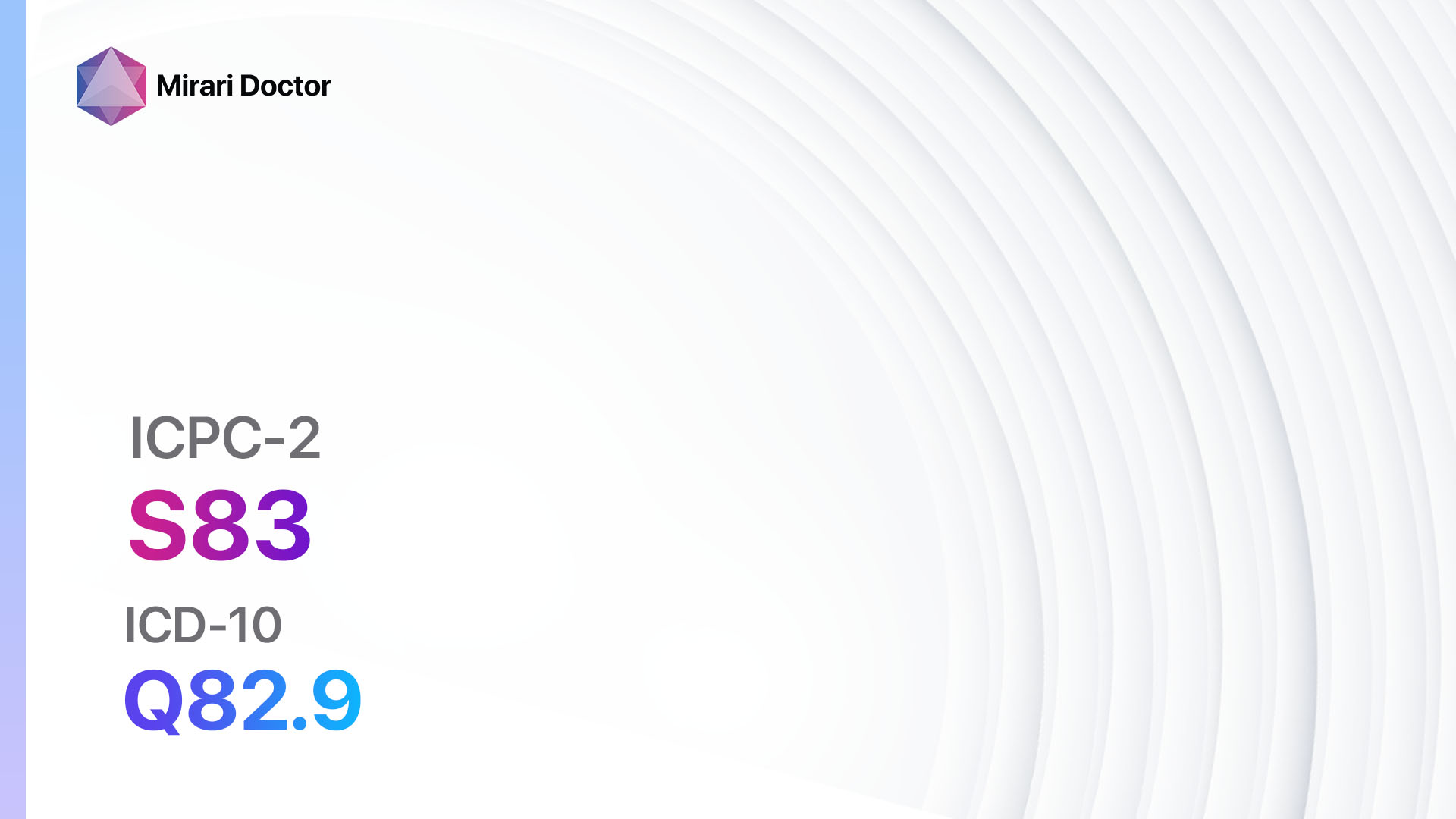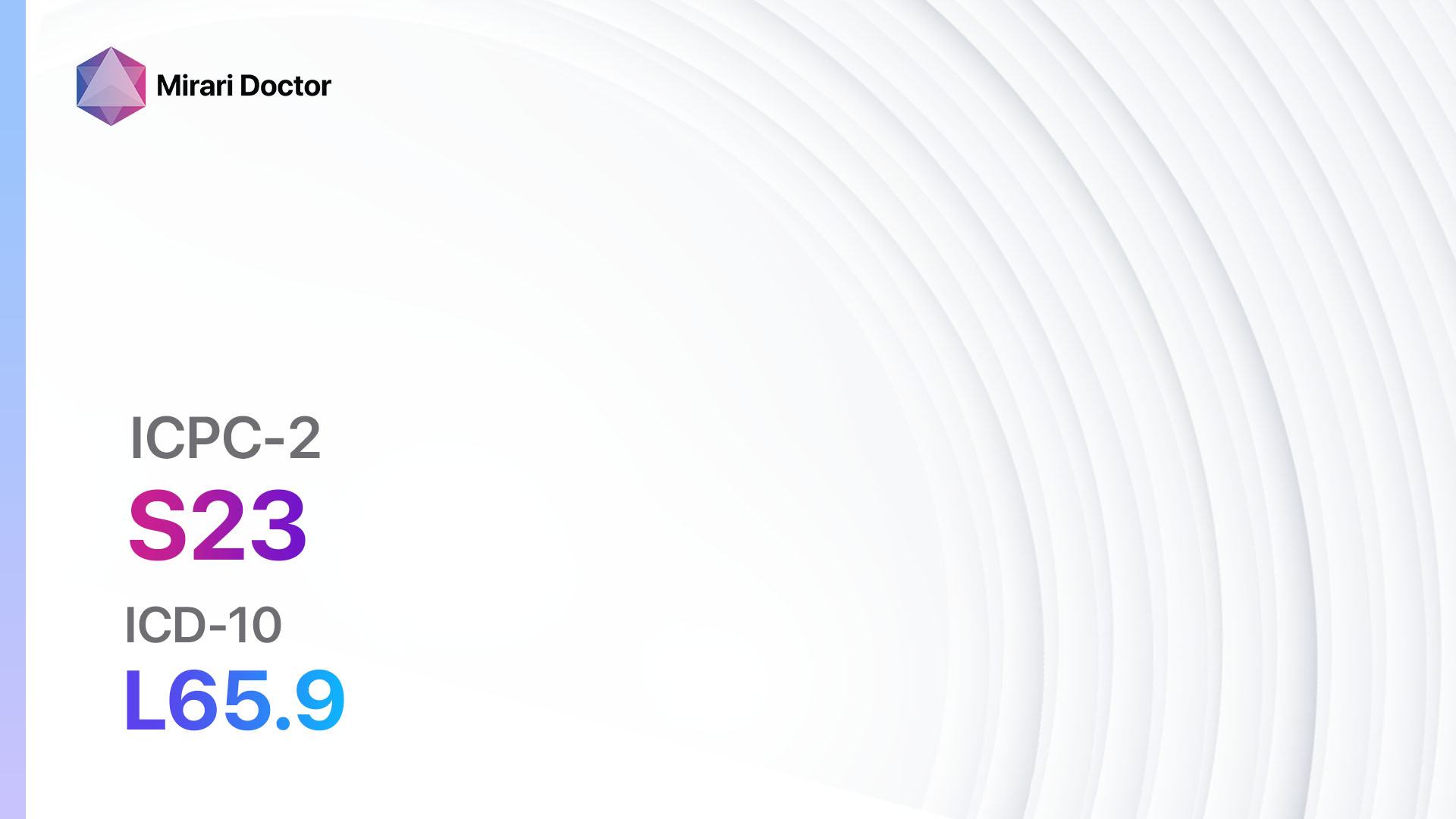
Introduction
Skin colour change refers to any alteration in the pigmentation of the skin, which can manifest as darkening, lightening, or the appearance of new spots or patches. This guide aims to provide healthcare professionals with a comprehensive approach to diagnosing and managing skin colour change. By understanding the symptoms, causes, and appropriate diagnostic steps, healthcare professionals can effectively identify the underlying condition and provide appropriate interventions.[1]
Codes
Symptoms
- Hyperpigmentation: Darkening of the skin.
- Hypopigmentation: Lightening of the skin.
- Erythema: Redness of the skin.
- Purpura: Purple or red spots on the skin.
- Jaundice: Yellowing of the skin and eyes.[3]
Causes
- Hyperpigmentation:
- Sun exposure
- Hormonal changes (e.g., pregnancy, oral contraceptives)
- Post-inflammatory hyperpigmentation
- Melasma
- Addison’s disease
- Hemochromatosis
- Hypopigmentation:
- Vitiligo
- Albinism
- Tinea versicolor
- Pityriasis alba
- Lichen sclerosus
- Erythema:
- Sunburn
- Rosacea
- Lupus erythematosus
- Eczema
- Psoriasis
- Purpura:
- Bruising
- Vasculitis
- Thrombocytopenia
- Leukemia
- Henoch-Schönlein purpura
- Jaundice:
- Liver disease
- Hemolytic anemia
- Gilbert’s syndrome
- Biliary obstruction
- Pancreatic cancer[4]
Diagnostic Steps
Medical History
- Gather information about the patient’s symptoms, including the duration, progression, and any associated symptoms.
- Ask about any recent exposure to sun or other potential triggers.
- Inquire about the patient’s medical history, including any underlying conditions or medications that may contribute to skin colour change.
- Assess for any family history of skin conditions or pigmentation disorders.[5]
Physical Examination
- Perform a thorough examination of the skin, noting the location, distribution, and characteristics of the colour change.
- Evaluate the texture, thickness, and moisture of the skin.
- Palpate any lesions or spots to assess for tenderness or other abnormalities.
- Check for any signs of inflammation or infection.
- Examine other body systems for additional signs or symptoms that may be related to the underlying cause of the skin colour change.[6]
Determine Severity
- Classify the skin colour change based on severity and depth, if applicable:
- Mild: Minimal pigmentation change, no significant impact on daily activities.
- Moderate: Noticeable pigmentation change, may cause mild discomfort or self-consciousness.
- Severe: Marked pigmentation change, significant impact on daily activities and quality of life.[7]
Laboratory Tests
- Complete blood count (CBC) to assess for anemia or other blood disorders.
- Liver function tests to evaluate liver function in cases of jaundice.
- Thyroid function tests to rule out thyroid disorders.
- Autoimmune markers, such as antinuclear antibodies (ANA), to assess for autoimmune conditions.
- Iron studies to evaluate for iron overload in cases of hyperpigmentation.[8]
Diagnostic Imaging
- In some cases, diagnostic imaging may be necessary to evaluate underlying structures or identify potential causes of skin colour change. However, imaging is not typically required for the diagnosis of skin colour change.[9]
Other Tests
- Skin biopsy: A small sample of skin may be taken for histopathological examination to determine the underlying cause of the skin colour change.
- Patch testing: Used to identify potential allergens or irritants that may be causing the skin colour change.
- Wood’s lamp examination: A handheld device that emits ultraviolet light to assess for fungal infections or pigment abnormalities.[10]
Follow-up and Patient Education
- Schedule follow-up appointments to monitor the progression of the skin colour change and assess the effectiveness of interventions.
- Provide patient education on the underlying condition, including potential triggers, management strategies, and when to seek medical attention.
- Emphasize the importance of sun protection and the use of sunscreen to prevent further skin damage.
Possible Interventions
Traditional Interventions
Medications:
Top 5 drugs for skin colour change:
- Hydroquinone:
- Cost: $10-$50 for a 30g tube.
- Contraindications: Hypersensitivity to hydroquinone.
- Side effects: Skin irritation, redness, dryness.
- Severe side effects: Allergic reactions, skin discoloration.
- Drug interactions: None reported.
- Warning: Avoid prolonged use and sun exposure.
- Corticosteroids (e.g., hydrocortisone, betamethasone):
- Cost: $10-$50 for a 30g tube.
- Contraindications: Active infection, hypersensitivity to corticosteroids.
- Side effects: Skin thinning, increased risk of infection.
- Severe side effects: Adrenal suppression, Cushing’s syndrome.
- Drug interactions: None reported.
- Warning: Avoid prolonged use and use under medical supervision.
- Retinoids (e.g., tretinoin, adapalene):
- Cost: $10-$50 for a 30g tube.
- Contraindications: Pregnancy, hypersensitivity to retinoids.
- Side effects: Skin dryness, redness, peeling.
- Severe side effects: None reported.
- Drug interactions: None reported.
- Warning: Avoid sun exposure and use sunscreen.
- Azelaic acid:
- Cost: $10-$50 for a 30g tube.
- Contraindications: Hypersensitivity to azelaic acid.
- Side effects: Skin irritation, burning, stinging.
- Severe side effects: Allergic reactions.
- Drug interactions: None reported.
- Warning: Avoid contact with eyes and mucous membranes.
- Calcineurin inhibitors (e.g., tacrolimus, pimecrolimus):
- Cost: $50-$100 for a 30g tube.
- Contraindications: Hypersensitivity to calcineurin inhibitors.
- Side effects: Skin burning, itching, redness.
- Severe side effects: Increased risk of skin infections.
- Drug interactions: None reported.
- Warning: Use under medical supervision and avoid prolonged use.
Alternative Drugs:
- Kojic acid: Inhibits melanin production and reduces pigmentation.
- Arbutin: Blocks tyrosinase activity and reduces pigmentation.
- Vitamin C: Antioxidant that can help brighten the skin and reduce pigmentation.
- Niacinamide: Reduces melanin production and improves skin barrier function.
- Glycolic acid: Exfoliates the skin and improves skin texture.
Alternative Interventions
- Chemical peels: Involves the application of a chemical solution to exfoliate the skin and improve pigmentation. Cost: $100-$500 per session.
- Laser therapy: Uses targeted laser beams to remove pigmented lesions and improve skin tone. Cost: $200-$1000 per session.
- Microdermabrasion: Exfoliates the skin using a diamond-tipped wand to improve pigmentation. Cost: $75-$200 per session.
- Cryotherapy: Freezing of pigmented lesions using liquid nitrogen to remove abnormal pigmentation. Cost: $100-$500 per session.
- Herbal remedies: Some herbs, such as licorice root and aloe vera, may have potential benefits for reducing pigmentation. Cost: Varies depending on the specific herb or remedy.
Lifestyle Interventions
- Sun protection: Use sunscreen with a minimum SPF of 30 and wear protective clothing to prevent further skin damage. Cost: $10-$30 for a bottle of sunscreen.
- Healthy diet: Consume a balanced diet rich in fruits, vegetables, and antioxidants to support skin health. Cost: Varies depending on food choices.
- Stress management: Practice stress-reducing techniques, such as meditation or yoga, to minimize the impact of stress on the skin. Cost: Varies depending on the chosen method.
- Adequate hydration: Drink plenty of water to keep the skin hydrated and promote overall skin health. Cost: Varies depending on water source.
- Gentle skincare routine: Use mild cleansers and moisturizers suitable for the skin type to maintain skin health. Cost: Varies depending on the chosen products.
It is important to note that the cost ranges provided are approximate and may vary depending on the location and availability of the interventions.
Mirari Cold Plasma Alternative Intervention
Understanding Mirari Cold Plasma
- Safe and Non-Invasive Treatment: Mirari Cold Plasma is a safe and non-invasive treatment option for various skin conditions. It does not require incisions, minimizing the risk of scarring, bleeding, or tissue damage.
- Efficient Extraction of Foreign Bodies: Mirari Cold Plasma facilitates the removal of foreign bodies from the skin by degrading and dissociating organic matter, allowing easier access and extraction.
- Pain Reduction and Comfort: Mirari Cold Plasma has a local analgesic effect, providing pain relief during the treatment, making it more comfortable for the patient.
- Reduced Risk of Infection: Mirari Cold Plasma has antimicrobial properties, effectively killing bacteria and reducing the risk of infection.
- Accelerated Healing and Minimal Scarring: Mirari Cold Plasma stimulates wound healing and tissue regeneration, reducing healing time and minimizing the formation of scars.
Mirari Cold Plasma Prescription
Video instructions for using Mirari Cold Plasma Device – S08 Skin colour change (ICD-10:R23.9)
| Mild | Moderate | Severe |
| Mode setting: 1 (Infection) Location: 0 (Localized) Morning: 15 minutes, Evening: 15 minutes |
Mode setting: 1 (Infection) Location: 0 (Localized) Morning: 30 minutes, Lunch: 30 minutes, Evening: 30 minutes |
Mode setting: 1 (Infection) Location: 0 (Localized) Morning: 30 minutes, Lunch: 30 minutes, Evening: 30 minutes |
| Mode setting: 2 (Wound Healing) Location: 0 (Localized) Morning: 15 minutes, Evening: 15 minutes |
Mode setting: 2 (Wound Healing) Location: 0 (Localized) Morning: 30 minutes, Lunch: 30 minutes, Evening: 30 minutes |
Mode setting: 2 (Wound Healing) Location: 0 (Localized) Morning: 30 minutes, Lunch: 30 minutes, Evening: 30 minutes |
| Mode setting: 10 (Dermatitis/Fungus) Location: 0 (Localized) Morning: 15 minutes, Evening: 15 minutes |
Mode setting: 10 (Dermatitis/Fungus) Location: 0 (Localized) Morning: 30 minutes, Lunch: 30 minutes, Evening: 30 minutes |
Mode setting: 10 (Dermatitis/Fungus) Location: 0 (Localized) Morning: 30 minutes, Lunch: 30 minutes, Evening: 30 minutes |
| Total Morning: 45 minutes approx. $7.50 USD, Evening: 45 minutes approx. $7.50 USD |
Total Morning: 90 minutes approx. $15 USD, Lunch: 90 minutes approx. $15 USD, Evening: 90 minutes approx. $15 USD, |
Total Morning: 90 minutes approx. $15 USD, Lunch: 90 minutes approx. $15 USD, Evening: 90 minutes approx. $15 USD, |
| Usual treatment for 7-60 days approx. $105 USD – $900 USD | Usual treatment for 6-8 weeks approx. $1,890 USD – $2,520 USD |
Usual treatment for 3-6 months approx. $4,050 USD – $8,100 USD
|
 |
|
Use the Mirari Cold Plasma device to treat Skin colour change effectively.
WARNING: MIRARI COLD PLASMA IS DESIGNED FOR THE HUMAN BODY WITHOUT ANY ARTIFICIAL OR THIRD PARTY PRODUCTS. USE OF OTHER PRODUCTS IN COMBINATION WITH MIRARI COLD PLASMA MAY CAUSE UNPREDICTABLE EFFECTS, HARM OR INJURY. PLEASE CONSULT A MEDICAL PROFESSIONAL BEFORE COMBINING ANY OTHER PRODUCTS WITH USE OF MIRARI.
Step 1: Cleanse the Skin
- Start by cleaning the affected area of the skin with a gentle cleanser or mild soap and water. Gently pat the area dry with a clean towel.
Step 2: Prepare the Mirari Cold Plasma device
- Ensure that the Mirari Cold Plasma device is fully charged or has fresh batteries as per the manufacturer’s instructions. Make sure the device is clean and in good working condition.
- Switch on the Mirari device using the power button or by following the specific instructions provided with the device.
- Some Mirari devices may have adjustable settings for intensity or treatment duration. Follow the manufacturer’s instructions to select the appropriate settings based on your needs and the recommended guidelines.
Step 3: Apply the Device
- Place the Mirari device in direct contact with the affected area of the skin. Gently glide or hold the device over the skin surface, ensuring even coverage of the area experiencing.
- Slowly move the Mirari device in a circular motion or follow a specific pattern as indicated in the user manual. This helps ensure thorough treatment coverage.
Step 4: Monitor and Assess:
- Keep track of your progress and evaluate the effectiveness of the Mirari device in managing your Skin colour change. If you have any concerns or notice any adverse reactions, consult with your health care professional.
Note
This guide is for informational purposes only and should not replace the advice of a medical professional. Always consult with your healthcare provider or a qualified medical professional for personal advice, diagnosis, or treatment. Do not solely rely on the information presented here for decisions about your health. Use of this information is at your own risk. The authors of this guide, nor any associated entities or platforms, are not responsible for any potential adverse effects or outcomes based on the content.
Mirari Cold Plasma System Disclaimer
- Purpose: The Mirari Cold Plasma System is a Class 2 medical device designed for use by trained healthcare professionals. It is registered for use in Thailand and Vietnam. It is not intended for use outside of these locations.
- Informational Use: The content and information provided with the device are for educational and informational purposes only. They are not a substitute for professional medical advice or care.
- Variable Outcomes: While the device is approved for specific uses, individual outcomes can differ. We do not assert or guarantee specific medical outcomes.
- Consultation: Prior to utilizing the device or making decisions based on its content, it is essential to consult with a Certified Mirari Tele-Therapist and your medical healthcare provider regarding specific protocols.
- Liability: By using this device, users are acknowledging and accepting all potential risks. Neither the manufacturer nor the distributor will be held accountable for any adverse reactions, injuries, or damages stemming from its use.
- Geographical Availability: This device has received approval for designated purposes by the Thai and Vietnam FDA. As of now, outside of Thailand and Vietnam, the Mirari Cold Plasma System is not available for purchase or use.
References
- Habif TP. Clinical Dermatology: A Color Guide to Diagnosis and Therapy. 6th ed. St. Louis, MO: Elsevier; 2016.
- World Health Organization. International Statistical Classification of Diseases and Related Health Problems, 10th Revision (ICD-10). Geneva: WHO; 2019.
- Kang S, Amagai M, Bruckner AL, et al. Fitzpatrick’s Dermatology. 9th ed. New York, NY: McGraw-Hill Education; 2019.
- Bolognia JL, Schaffer JV, Cerroni L. Dermatology. 4th ed. Philadelphia, PA: Elsevier; 2018.
- Wolff K, Johnson RA, Saavedra AP, Roh EK. Fitzpatrick’s Color Atlas and Synopsis of Clinical Dermatology. 8th ed. New York, NY: McGraw-Hill Education; 2017.
- Goldsmith LA, Katz SI, Gilchrest BA, Paller AS, Leffell DJ, Wolff K. Fitzpatrick’s Dermatology in General Medicine. 8th ed. New York, NY: McGraw-Hill Education; 2012.
- James WD, Elston DM, Treat JR, Rosenbach MA, Neuhaus IM. Andrews’ Diseases of the Skin: Clinical Dermatology. 13th ed. Philadelphia, PA: Elsevier; 2020.
- Elston DM, Ferringer T, Ko CJ, Peckham S, High WA, DiCaudo DJ. Dermatopathology. 3rd ed. Philadelphia, PA: Elsevier; 2019.
- Weston WL, Lane AT, Morelli JG. Color Textbook of Pediatric Dermatology. 5th ed. St. Louis, MO: Mosby; 2017.
- Usatine RP, Riojas M, Stulberg DL, Pfenninger JL. Color Atlas of Family Medicine. 3rd ed. New York, NY: McGraw-Hill Education; 2018.
Related articles
Made in USA





























